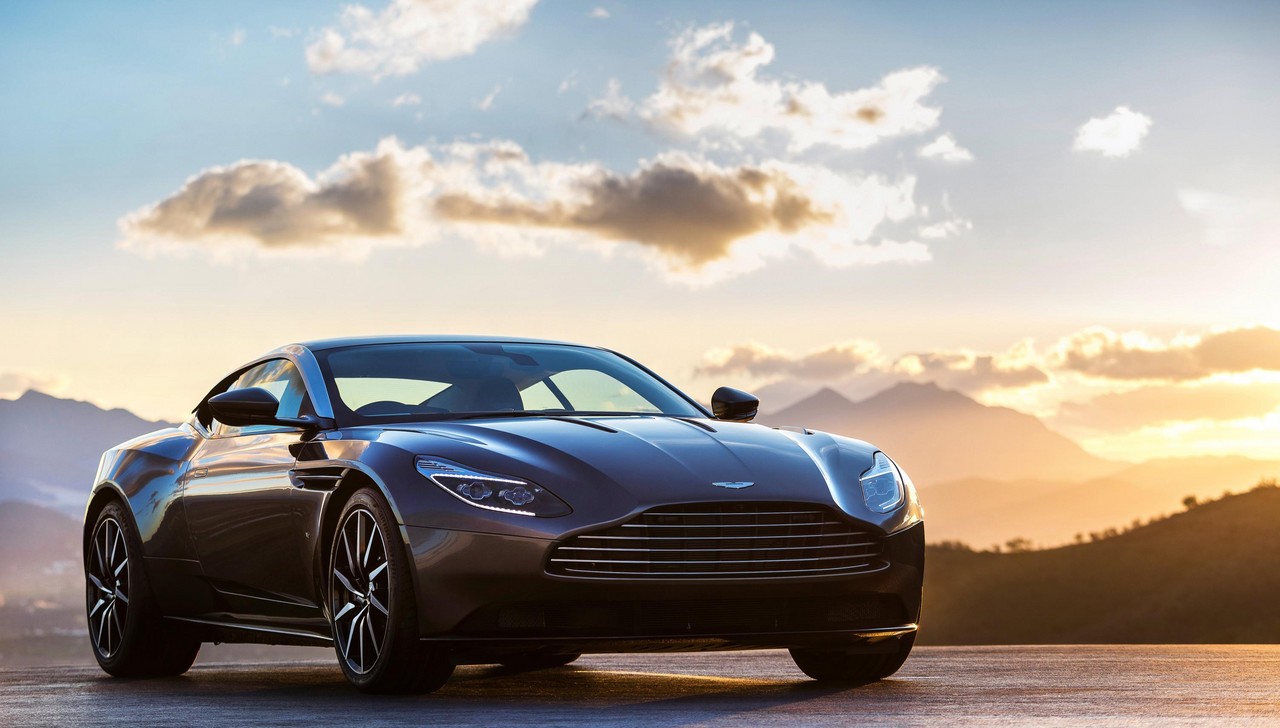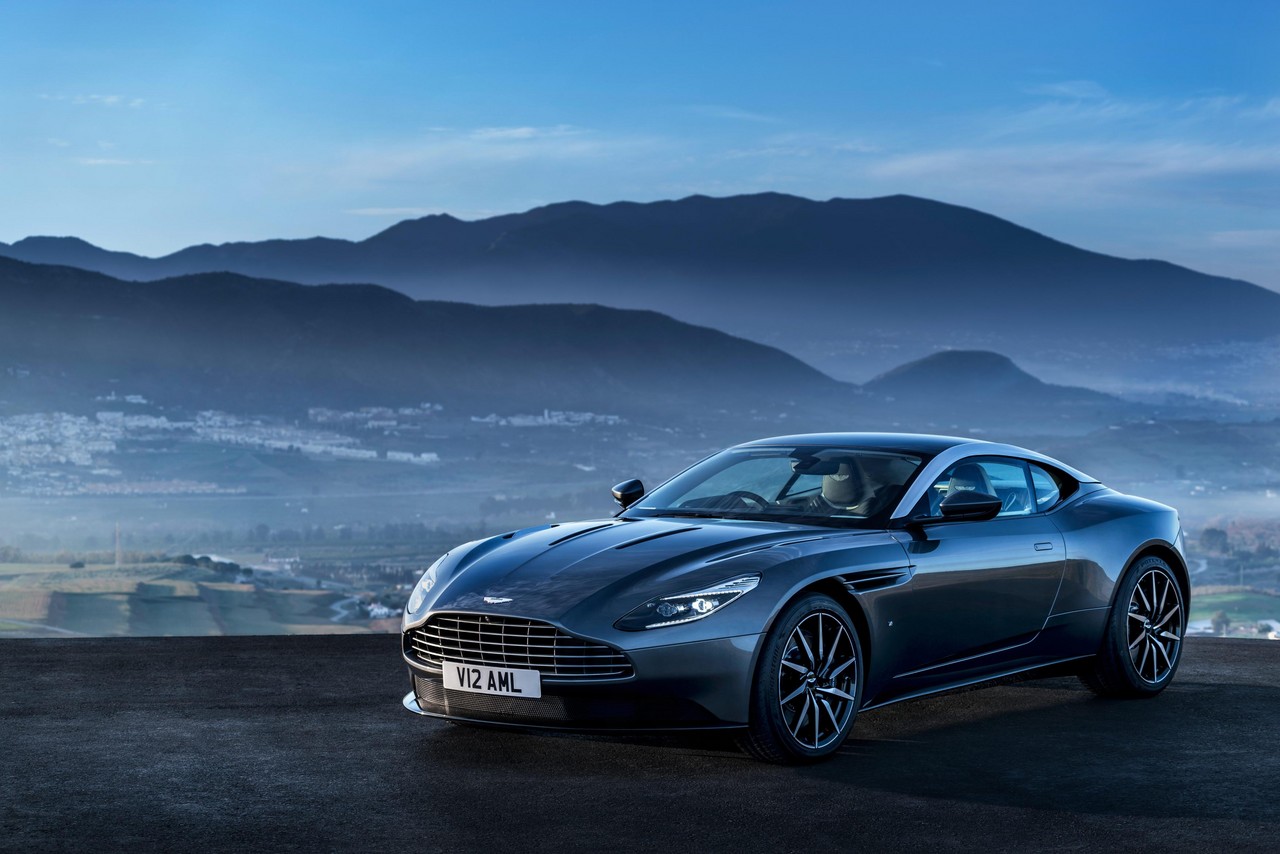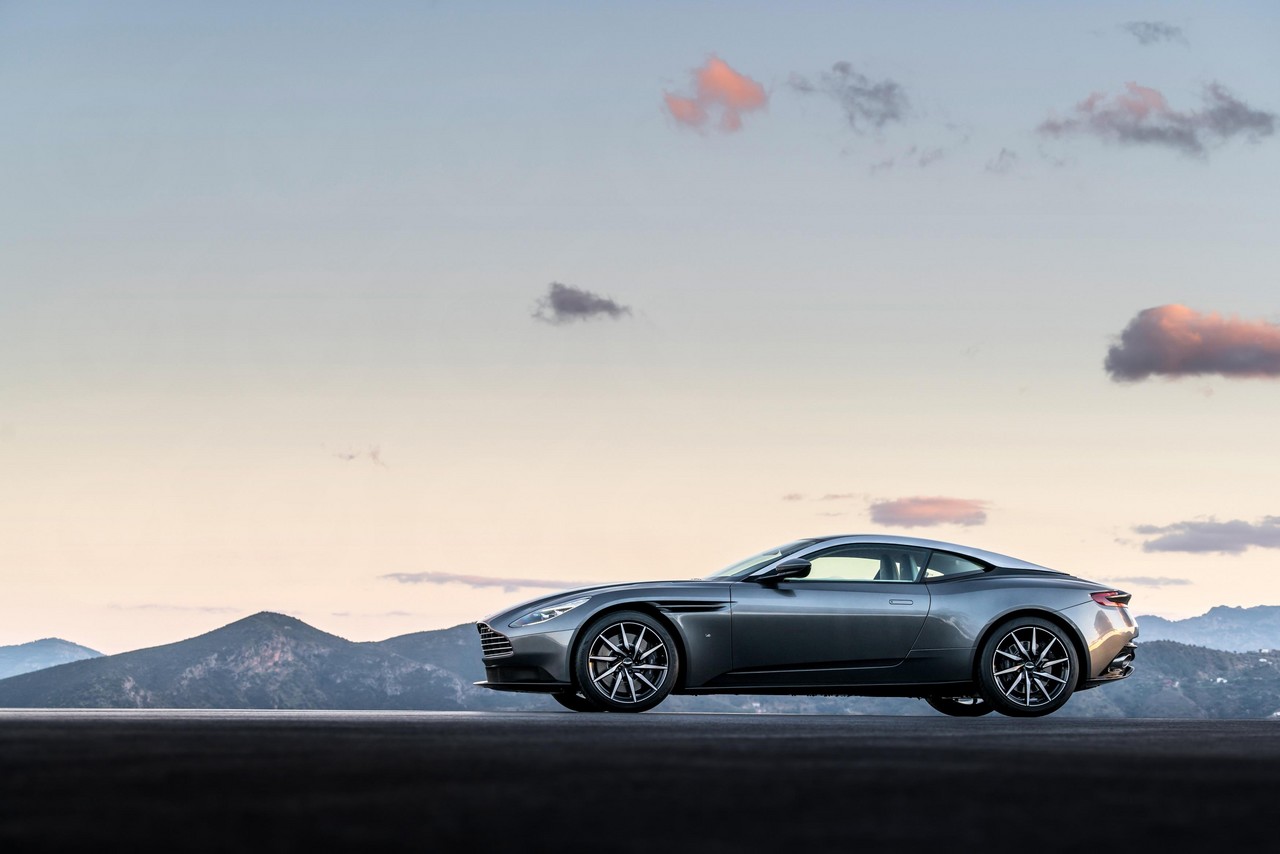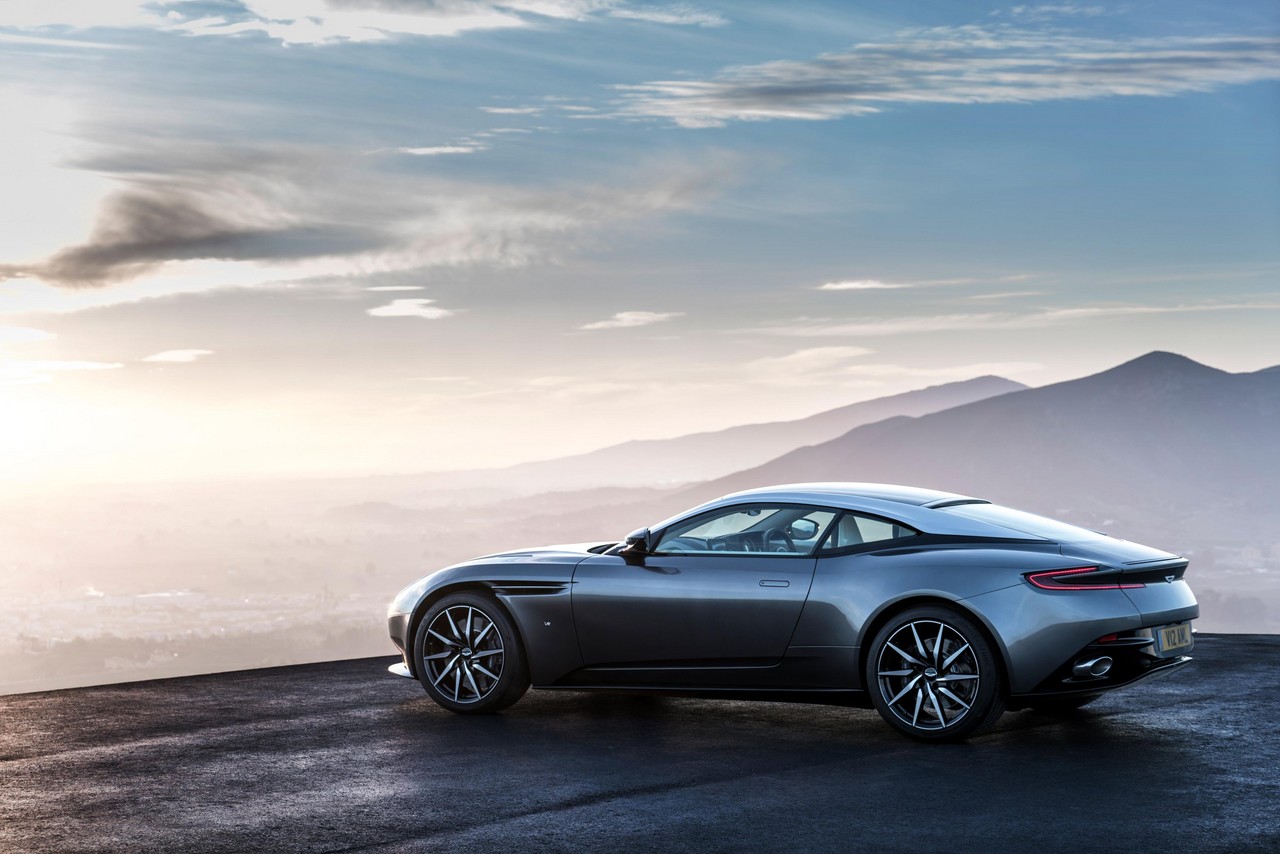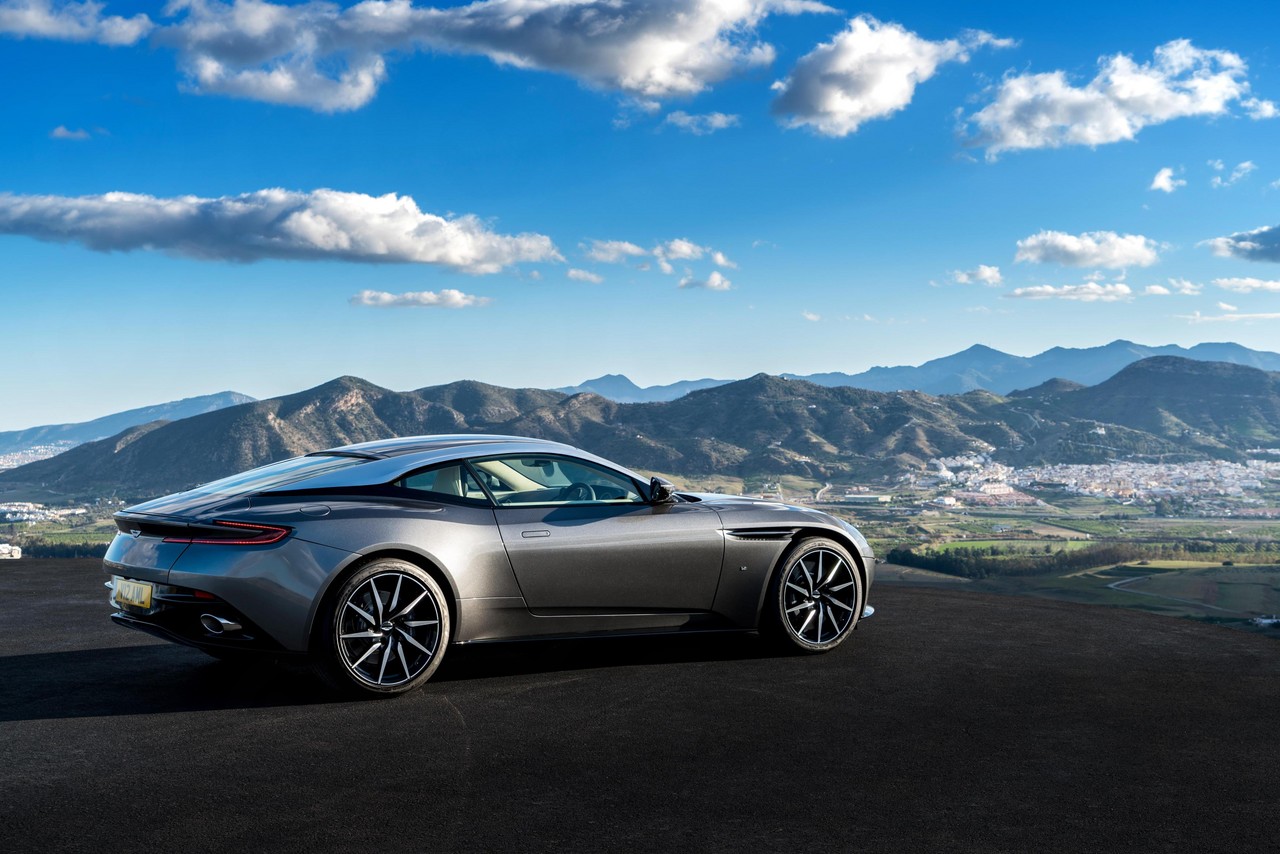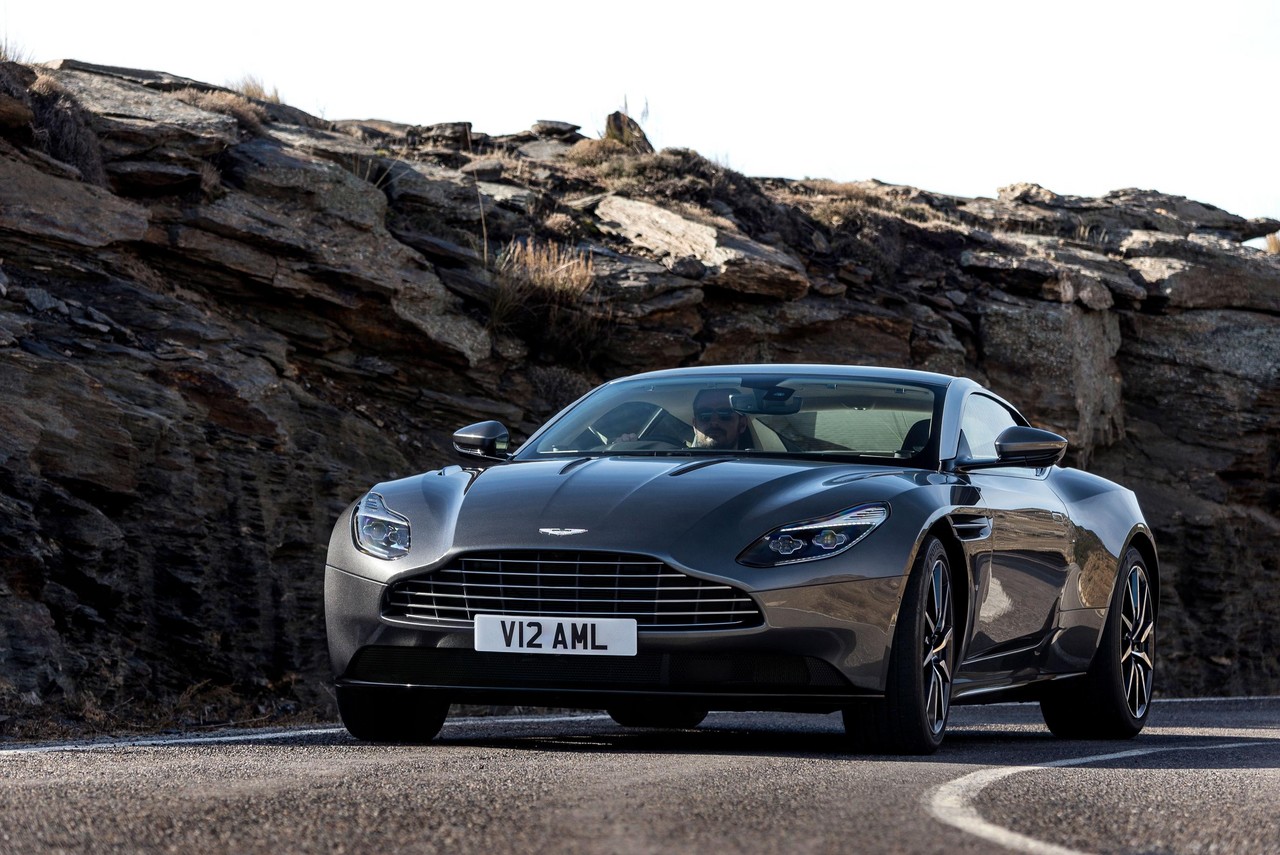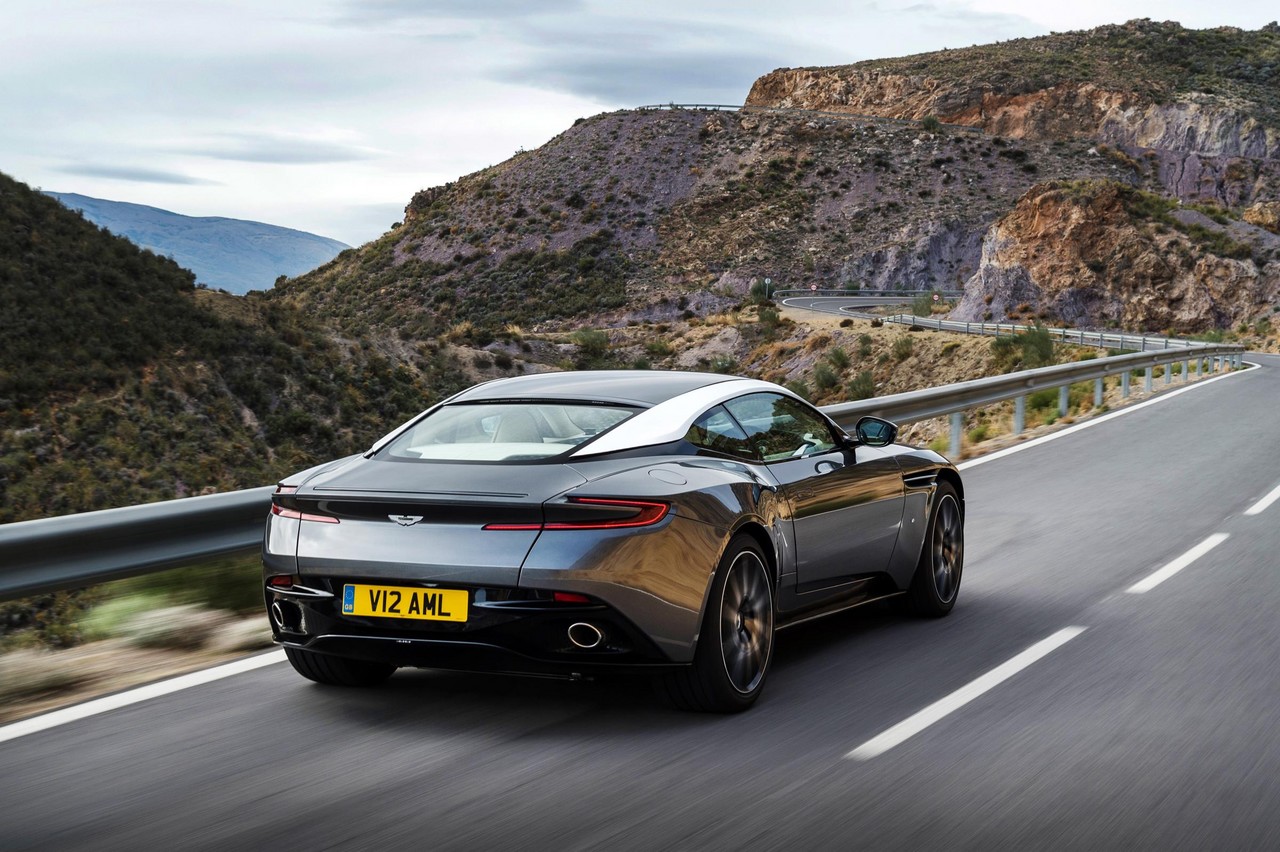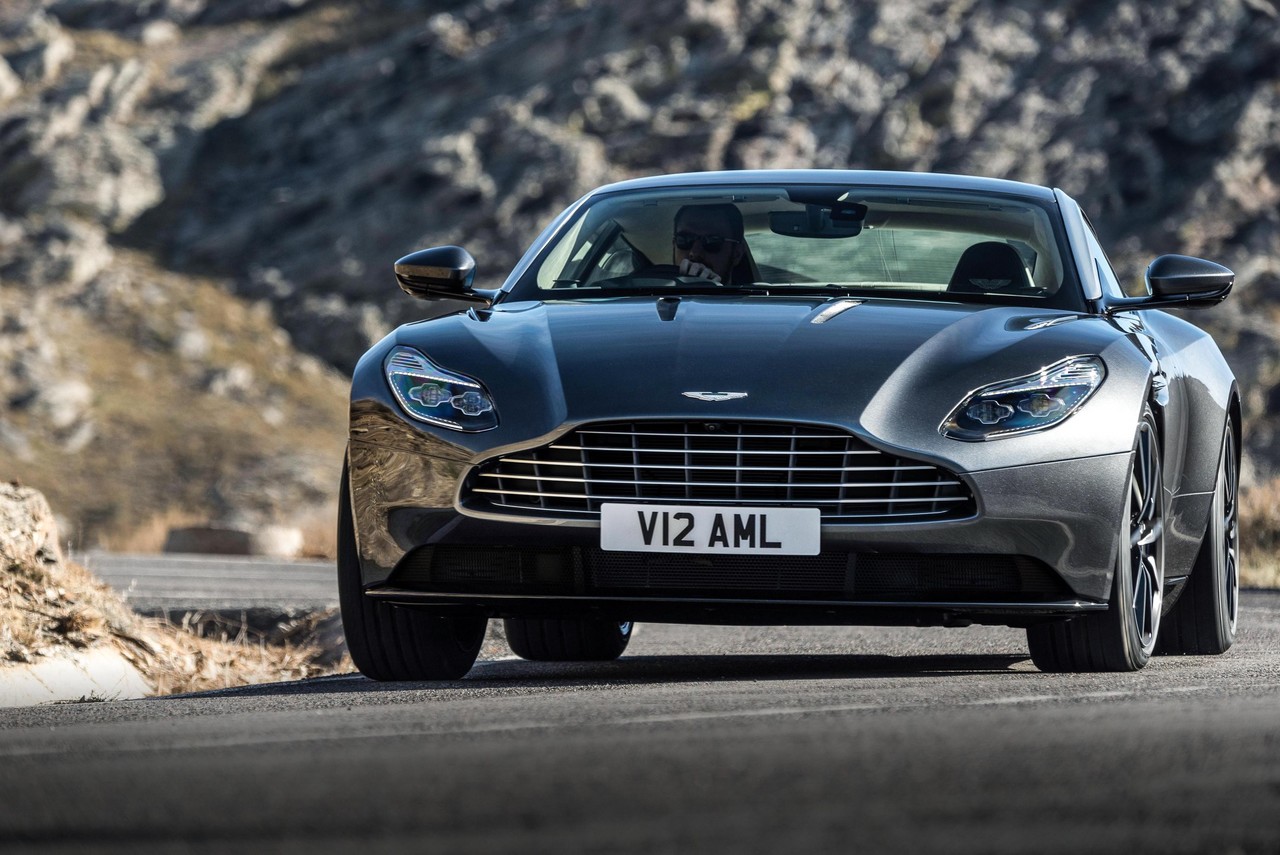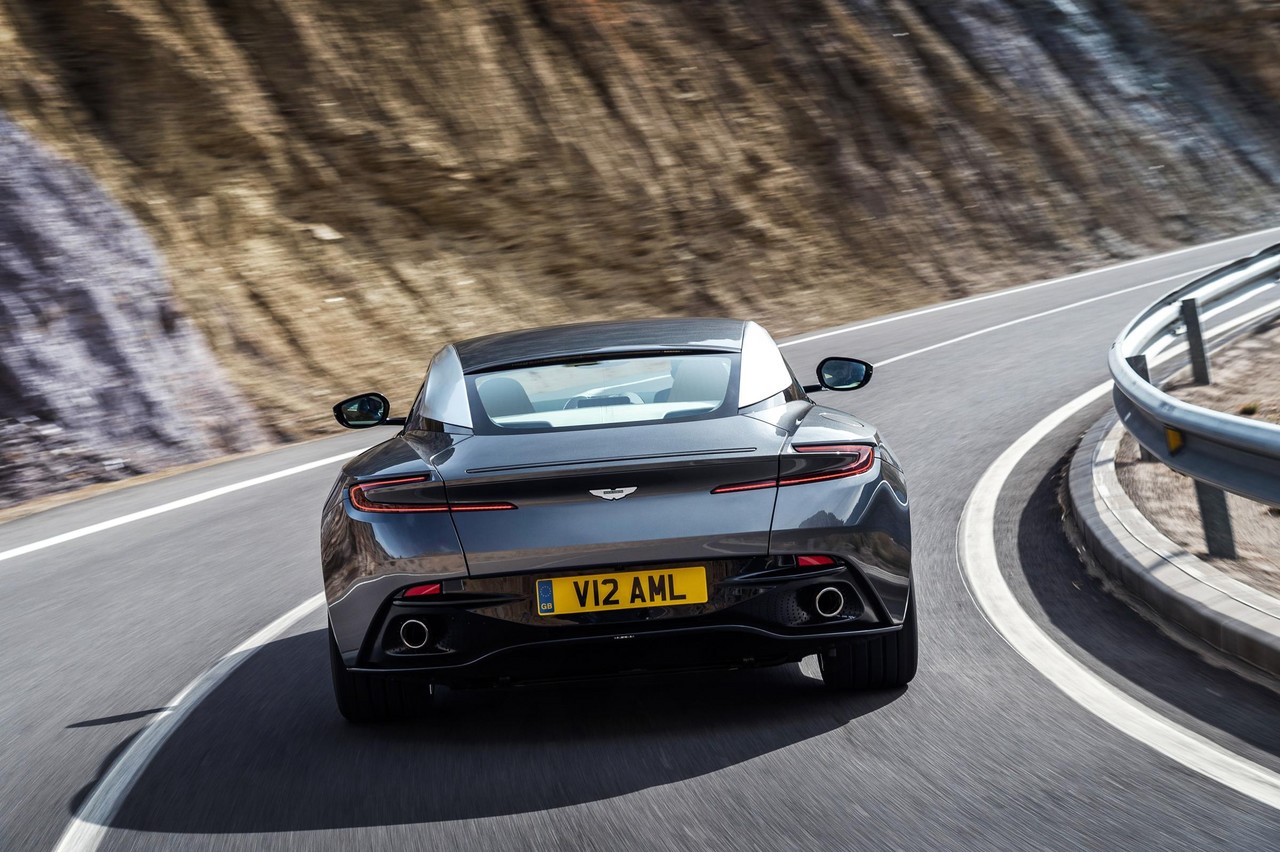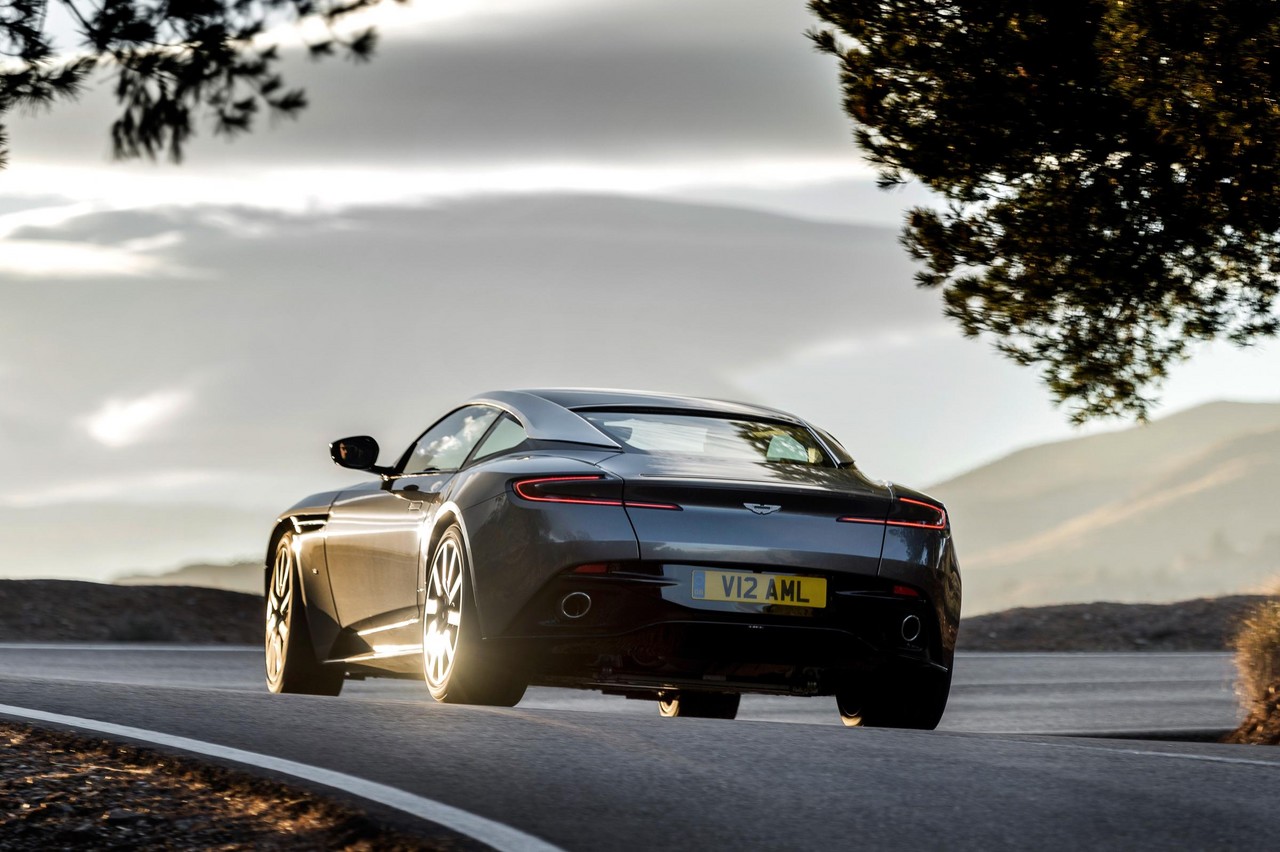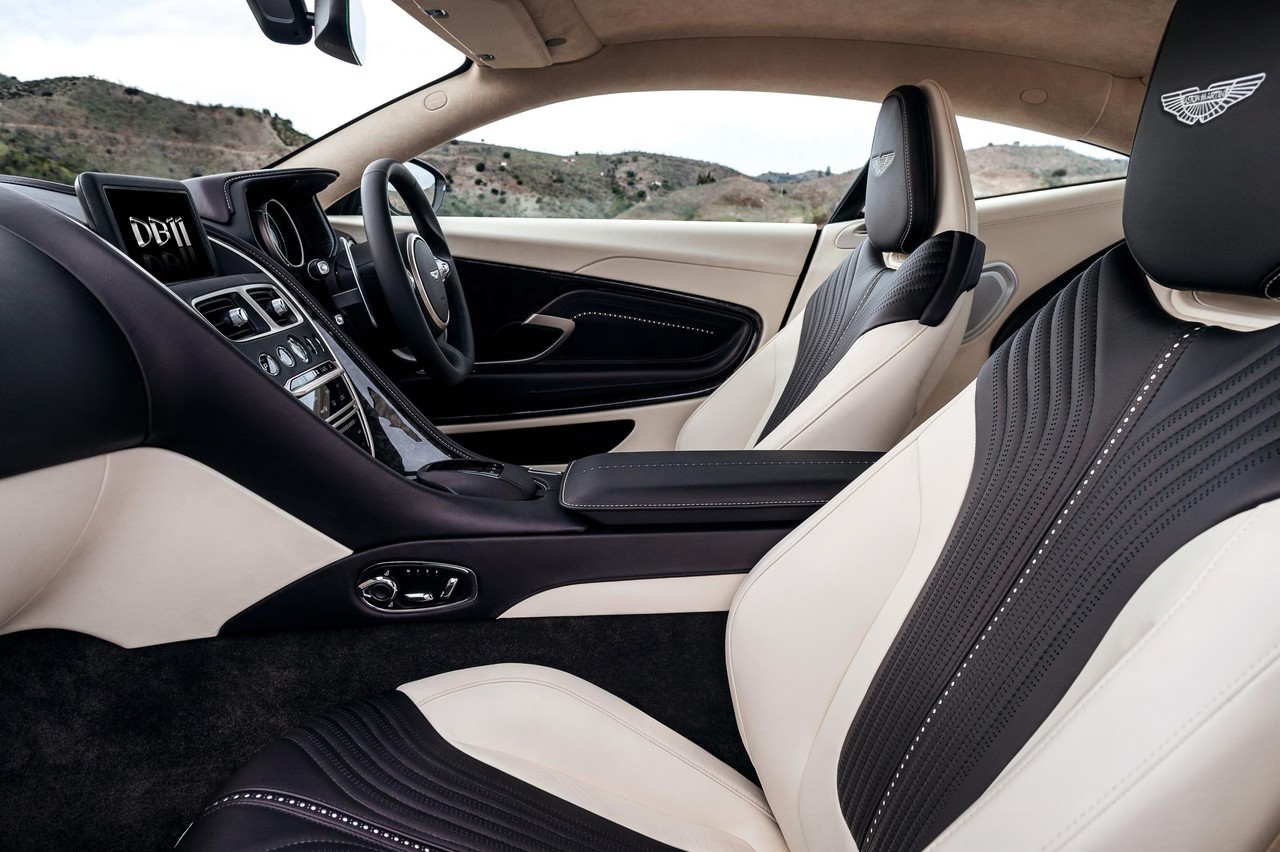
- Mighty 5.2-litre AE31 biturbo V12 engine; turbo lag only apparent at very low rpm
- Relatively softly-sprung Bilstein adaptive dampers contribute to excellent ride quality
- Impressive chassis balance and taut body control
- Quality leather upholstery; significantly higher standard of interior fit and finish than DB9
- Mercedes-sourced switchgear, infotainment and digital instrument cluster
- Refined ZF automatic transmission
- Autonomous Emergency Braking (AEB) not available
- Steering could use more weight and provide greater feedback
- Greater interior noise than other GT rivals
- Improved rear head and leg room, but still cramped for adults
Overview
Released in Australia in September 2016, the Aston Martin DB11 was a rear-wheel drive grand tourer. Hand-built in Gaydon, England, the Aston Martin DB11 was powered by a 5.2-litre twin-turbocharged V12 petrol engine that was mated to an eight-speed ZF automatic transmission.
Twin-turbo AE31 V12 engine
The 5204 cc AE31 V12 engine had an aluminium block and cylinder head, fully CNC machined combustion chambers, twin turbochargers with water-cooled intercoolers, double overhead camshafts, four valves per cylinder, variable intake and exhaust camshaft timing, and a compression ratio of 9.3:1. To reduce fuel consumption, the Aston Martin DB11’s twin-turbo V12 engine had:
- ‘Intelligent Bank Activation’ which could shut down one bank of cylinders during periods of low demand (such as when cruising, lift-off or under light acceleration); and,
- A stop-start function that enabled the engine to shut down while the DB11 was stationary in traffic.
According to Aston Martin, the DB11 could accelerate from rest to 100 km/h (62 mph) in 3.9 seconds and had a top speed of 322 km/h (200 mph).
| Engine | Trans. | Peak power | Peak torque | |
|---|---|---|---|---|
| Aston Martin DB11 | 5.2-litre AE31 twin-turbo petrol V12 | 8sp auto | 447 kW at 6500 rpm | 700 Nm at 1500-5000 rpm |
Body and styling
The Aston Martin DB11 was underpinned by a new extruded bonded aluminium structure which included Hot Form Quenched (HFQ) aluminium; cast-magnesium door structures were also used to minimise mass. Compared to the Aston Martin AM113 DB9 , the DB11’s body structure was lighter, stronger and more space efficient (particularly for rear occupants).
Relative to the AM113 DB9, the Aston Martin DB11 was 30 mm longer (at 4750 mm), 45 mm wider (1950 mm, excluding door mirrors), 8 mm higher (1290 mm) and had a 65 mm longer wheelbase (2805 mm); the longer wheelbase enabled the V12 engine to be fitted further back in the vehicle’s body for better weight distribution (51:49). Furthermore, the DB11 had a dry weight of 1770 kg.
Design cues for the Aston Martin DB11 included its front-hinged clamshell bonnet, LED headlights, roof strakes which flowed from the A-pillar to C-pillar, and sloping decklid which blended into the sculpted tail-lights.
Aerodynamics and torque vectoring
To reduce front-end lift, the Aston Martin DB11 had a gill-like Curlicue which released high-pressure air from inside the wheel arch via a concealed vent within the side-strake. Rear-end lift was reduced by the ‘Aston Martin AeroBlade’, a virtual spoiler which received air via the air intakes in the base of each C-pillar.
The Aston Martin DB11 had a torque vectoring function that could brake an inside wheel when cornering to generate a yaw effect to reduce understeer.
Suspension
The Aston Martin DB11 had double wishbone suspension front suspension and independent multi-link rear suspension (both with coil springs, anti-roll bars and adaptive dampers). The DB11 had selectable drive modes – GT, Sport and Sport Plus – which varied:
- Damper settings for the electronically-controlled Bilstein dampers (Aston Martin’s ‘Adaptive Damping System’ or ADS);
- Accelerator pedal response;
- Transmission behaviour;
- Steering weight; and,
- Torque Vectoring by braking behaviour.
Steering
The Aston Martin DB11 had rack-and-pinion steering with electric power assistance; the steering ratio was 13.0:1, while the steering wheel required 2.4 turns from lock to lock.
Safety equipment
Standard safety equipment for the Aston Martin DB11 include dual front airbags, front knee airbags, front seat-mounted side airbags (for pelvis/thorax protection), curtain airbags (for head protection), ABS, electronic brake force distribution, brake assist, electronic stability control, traction control and front seatbelts with pre-tensioners and load limiters.
Wheels and brakes
The Aston Martin DB11 had 9.0J x 20-inch front and 11.0J x 20-inch rear cast flow formed alloy wheels, with 255/45 ZR20 front and 295/35 ZR20 rear Bridgestone S007 tyres that were specially developed for the Aston DB11 and had a unique tread pattern.
The Aston Martin DB11 had 400 mm by 36 mm cast iron front brake discs which ‘floated’ on an aluminium bell and were fitted with six-piston monobloc callipers. The 360 mm by 32 mm cast iron rear discs also had an integrated aluminium bell and four-piston monobloc callipers.
Features: Aston Martin DB11
Inside, the Aston Martin DB11 featured a full-colour 12-inch TFT LCD instrument cluster which was developed in conjunction with Daimler AG (parent company of Mercedes-Benz). The DB11 also had a centrally-mounted eight-inch TFT screen for infotainment functions. The satellite navigation system could be controlled via a rotary dial, while an optional touchpad provided character recognition, multi-touch and gesture support.
Standard features for the Aston Martin DB11 included a 400 watt Aston Martin Audio System with digital radio tuner (DAB), USB connectivity and Bluetooth mobile phone connectivity and audio streaming, a Wi-Fi Hub, dual-zone climate control air conditioning, Strathmore leather upholstery, power adjustable and heated front seats with memory settings, cruise control with speed limiter, LED headlamps with integrated daytime running lights, a black leather steering wheel, remote central locking with proximity key (i.e. keyless entry), power windows, power adjustable and heated door mirrors with folding function, a power adjustable steering column (for height and reach), push-button start, Alcantara headlining, tyre pressure monitoring, a trip computer, an alarm and immobiliser.
The Aston Martin DB11 also had an ‘auto-park assist’ function and a surround camera system for 360-degree coverage that could provide a ‘bird’s eye’ view of the vehicle to assist in low-speed manoeuvring.
Brochure
